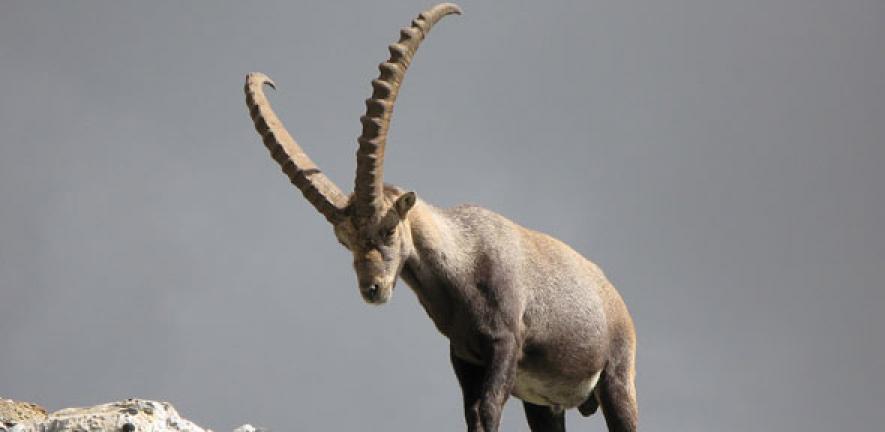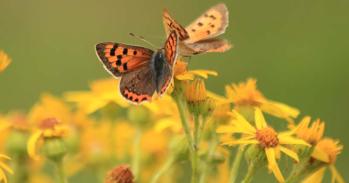
Researchers studying the hunting of ibex in Switzerland over the past 40 years have shown how hunts, when tightly monitored, can help maintain animal populations at optimal levels.
Researchers studying the hunting of ibex in Switzerland over the past 40 years have shown how hunts, when tightly monitored, can help maintain animal populations at optimal levels.
Our results emphasise the importance of continuous monitoring of hunting practices, especially in regions where hunters can choose animals based on certain traits.
Ulf Büntgen
The international team of researchers, led by the University of Cambridge and the Swiss Federal Institute for Forest, Snow and Landscape Research (WSL), studied the hunt of Alpine ibex – a type of wild goat with long, curved horns – in the eastern Swiss canton of Graubünden by examining the horn size of more than 8,000 ibex harvested between 1978 and 2013, to determine whether average horn growth or body weight had changed over the last 40 years.
Their results, published in the Journal of Animal Ecology, reveal that unsurprisingly, ibex with longer-than-average horns are more likely to be shot than animals of the same age with shorter horns. However, due to tight controls placed on the hunt by the Swiss authorities, hunters tend to shoot as few animals as possible, to avoid violating the rules and incurring large fines.
Hunting for specific traits can place selective pressure on certain species, resulting in a negative evolutionary response. In their study, the researchers investigated whether the targeting of ibex with large horns would lead to a lower average horn size across the entire population.
They found that while even tightly-managed hunts cannot prevent hunters from targeting longer-horned animals, no long-term changes were found in the horn length of male ibex in Graubünden, which is most likely related to the fact that the numbers of ibex removed from the population by hunters is too small to have an evolutionary effect.
“Our most important finding is that ibex hunting over the last 40 years has not had a negative effect on the constitution of the animals,” said WSL’s Kurt Bollmann, the study’s senior author.
“The good news for hunting and nature conservation is that horn growth in Graubünden’s ibex has not reduced over the decades and their average body weight has also remained stable,” said Professor Ulf Büntgen from Cambridge’s Department of Geography, the study’s first author.
“We are happy that the knowledge gained in practice about our ibex herds has now been scientifically proven and that ibex hunting in Graubünden can be described as sustainable,” said co-author Hannes Jenny from the Graubünden Hunting and Fishing Authority.
While hunters often select animals based on their age and gender or the quality of the meat and their worthiness as a trophy, the hunting authorities would like to keep the size of individual herds at a level where the surrounding forests can provide them with enough food during the winter. Regardless of these conflicting interests, the most important point from a wildlife biology perspective is that hunting does not negatively affect the wild ibex population in the long term.
The Alpine ibex is a species that was formerly extinct and is now regarded as a major success story for Swiss conservation. Alpine ibex have a long lifespan (17 years on average) and relatively low reproductive performance, so the Swiss hunt is closely monitored to maintain the animal population. In Graubünden, where around 40% of Switzerland’s ibex live, each hunter may only bring down one female and one male in a particular age group every 10 years. If a hunter violates this requirement, for example by shooting an older animal with longer horns, they have to pay a fine and the animal is confiscated by the authorities.
“Our results also emphasise the importance of continuous monitoring of hunting practices, especially in regions where hunters can choose animals based on certain traits,” said Büntgen.
The researchers are currently developing a more comprehensive dataset, which will compare the evolutionary pressures on ibex in regions where hunting is allowed against regions where it is prohibited.
Reference:
Ulf Büntgen et al. ‘Horn growth variation and hunting selection of the Alpine ibex.’ Journal of Animal Ecology (2018). DOI: 10.1111/1365-2656.12839
Adapted from a WSL press release.

The text in this work is licensed under a Creative Commons Attribution 4.0 International License. Images, including our videos, are Copyright ©University of Cambridge and licensors/contributors as identified. All rights reserved. We make our image and video content available in a number of ways – as here, on our main website under its Terms and conditions, and on a range of channels including social media that permit your use and sharing of our content under their respective Terms.




